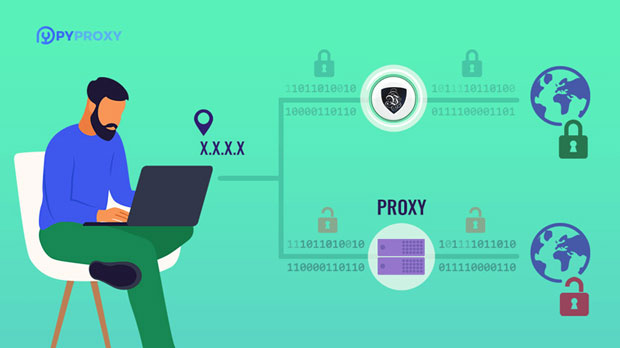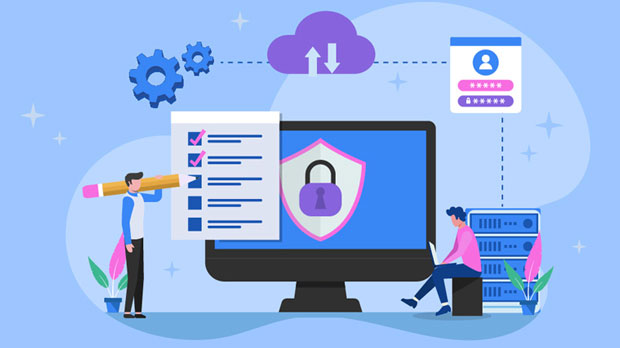What is the difference between a free proxy IP address and a paid proxy IP?
When it comes to using proxy ips for browsing or securing your online identity, users often face the dilemma of choosing between free proxy ips and paid proxy IPs. While both options allow users to mask their IP address and access content from different geographical locations, there are significant differences in terms of performance, reliability, security, and support. Understanding these differences is crucial for individuals and businesses that want to ensure safe and efficient internet usage. This article explores the core distinctions between free and paid proxy IPs and highlights why opting for a paid service may be a more practical long-term solution. 1. Performance and SpeedOne of the most noticeable differences between free and paid proxy IPs is their performance and speed. Free proxies are often slower than paid proxies due to several factors. Since free proxies are available to anyone, they tend to be overloaded with users. This congestion leads to slower connection speeds, as the server is handling a larger volume of traffic than it is designed for. As a result, users may experience delays, buffering, or even timeouts, which can severely affect the browsing experience.On the other hand, paid proxy services typically offer better performance. They often have dedicated servers that are not shared with a large number of users, ensuring faster and more stable connections. Paid proxy providers also tend to invest in high-speed infrastructure and use advanced technologies to optimize their networks. For businesses that rely on proxies for tasks such as web scraping, data collection, or online marketing, the speed and performance offered by paid proxies can be a significant advantage.2. Security and PrivacySecurity and privacy are crucial aspects to consider when using proxies, especially when dealing with sensitive information. Free proxy services usually offer lower levels of security. Since many free proxies are not encrypted, users' data and browsing activities are vulnerable to interception by malicious third parties. Additionally, some free proxy servers are known to log user data, which can compromise privacy. This makes free proxies a risky option for those who require anonymity or wish to protect their personal information while browsing.Paid proxies, on the other hand, are generally much more secure. Reputable paid proxy services often offer encryption to protect users' data and ensure that their online activities remain private. These providers also tend to have strict no-logging policies, meaning they do not store or track any information related to their users’ internet usage. For users who prioritize privacy and security, paid proxies offer peace of mind by minimizing the risk of data breaches, identity theft, or unauthorized access to sensitive information.3. Reliability and UptimeAnother important distinction between free and paid proxies is reliability. Free proxy services often have unstable uptime, meaning that the proxy server may frequently go down or become unavailable. This is particularly problematic for users who need a proxy for continuous tasks, such as automated browsing or accessing geo-blocked content. The lack of consistent uptime can disrupt users’ activities and lead to frustration.Paid proxies, however, offer a higher level of reliability. They are typically maintained by professional teams that ensure the servers are always up and running smoothly. Paid proxy providers often offer service level agreements (SLAs) that guarantee a certain percentage of uptime, which is crucial for users who need dependable and uninterrupted service. Whether for business operations or personal use, the reliability of paid proxies ensures that users can continue their online activities without frequent interruptions.4. IP Address Diversity and Location ChoicesThe range of available IP addresses and server locations is another key difference between free and paid proxy services. Free proxies generally offer limited options when it comes to choosing IP addresses or selecting server locations. Most free proxy services have a small pool of IP addresses, and users are often restricted to a limited number of locations. This can be a disadvantage for those who require proxies for tasks like accessing content from specific regions or bypassing geographic restrictions.Paid proxy services typically offer a much broader selection of IP addresses and locations. Many paid providers offer thousands of IP addresses spread across various countries and regions. This diversity allows users to choose proxies that best suit their needs, whether it is for testing websites from different locations or for accessing region-specific content. Paid proxies also offer the flexibility to rotate IP addresses frequently, which is useful for tasks like web scraping, where avoiding IP bans is crucial.5. Customer Support and ServiceWhen using a proxy service, having access to reliable customer support can make a significant difference. Free proxy services often lack proper customer support, leaving users to troubleshoot issues on their own. If a free proxy server stops working or encounters technical difficulties, users may not be able to get timely assistance, which can lead to prolonged disruptions in service.Paid proxy services typically offer 24/7 customer support, ensuring that users can resolve any issues quickly and efficiently. Support is usually provided through multiple channels, such as email, live chat, or phone, and the support teams are often knowledgeable and responsive. This level of customer service is invaluable for businesses and individuals who rely on proxies for critical operations and cannot afford prolonged downtime.6. Legal and Ethical ConcernsUsing proxies, especially free ones, can sometimes raise legal and ethical concerns. Some free proxy providers may engage in questionable practices, such as injecting ads into web traffic, selling user data, or redirecting users to malicious websites. These activities can be not only unethical but also illegal, putting users at risk of being exposed to scams or legal actions.Paid proxy providers, in contrast, are more likely to operate within legal and ethical boundaries. Reputable paid proxy services comply with privacy laws and regulations, ensuring that users’ data is protected and that their activities are not subject to exploitation. For users concerned about the legality and ethics of their internet usage, paid proxies offer a more reliable and lawful alternative.7. Cost ConsiderationsWhile free proxies may seem appealing because of their zero cost, they come with significant limitations that can ultimately cost users in terms of performance, security, and reliability. In contrast, paid proxies require an investment but provide better value in the long run, especially for users who need high performance and security. Paid proxy services often offer flexible pricing plans, allowing users to choose a plan that fits their budget and requirements.For individuals or businesses that need proxies for serious tasks, such as data scraping or secure online activities, the investment in paid proxies is often worth it. The improved performance, security, and support offered by paid proxies ensure a more efficient and secure internet experience.ConclusionIn conclusion, the key differences between free and paid proxy IPs lie in performance, security, reliability, and customer support. While free proxies may be suitable for casual users with basic needs, they come with limitations that can hinder productivity and compromise security. Paid proxies, on the other hand, offer a more reliable, secure, and high-performance solution, making them ideal for businesses or individuals who require robust online protection and efficient service. Ultimately, the choice between free and paid proxies depends on the specific needs and priorities of the user, but for those seeking long-term, reliable, and secure proxy services, paid proxies are the clear winner.
2025-01-31

























































